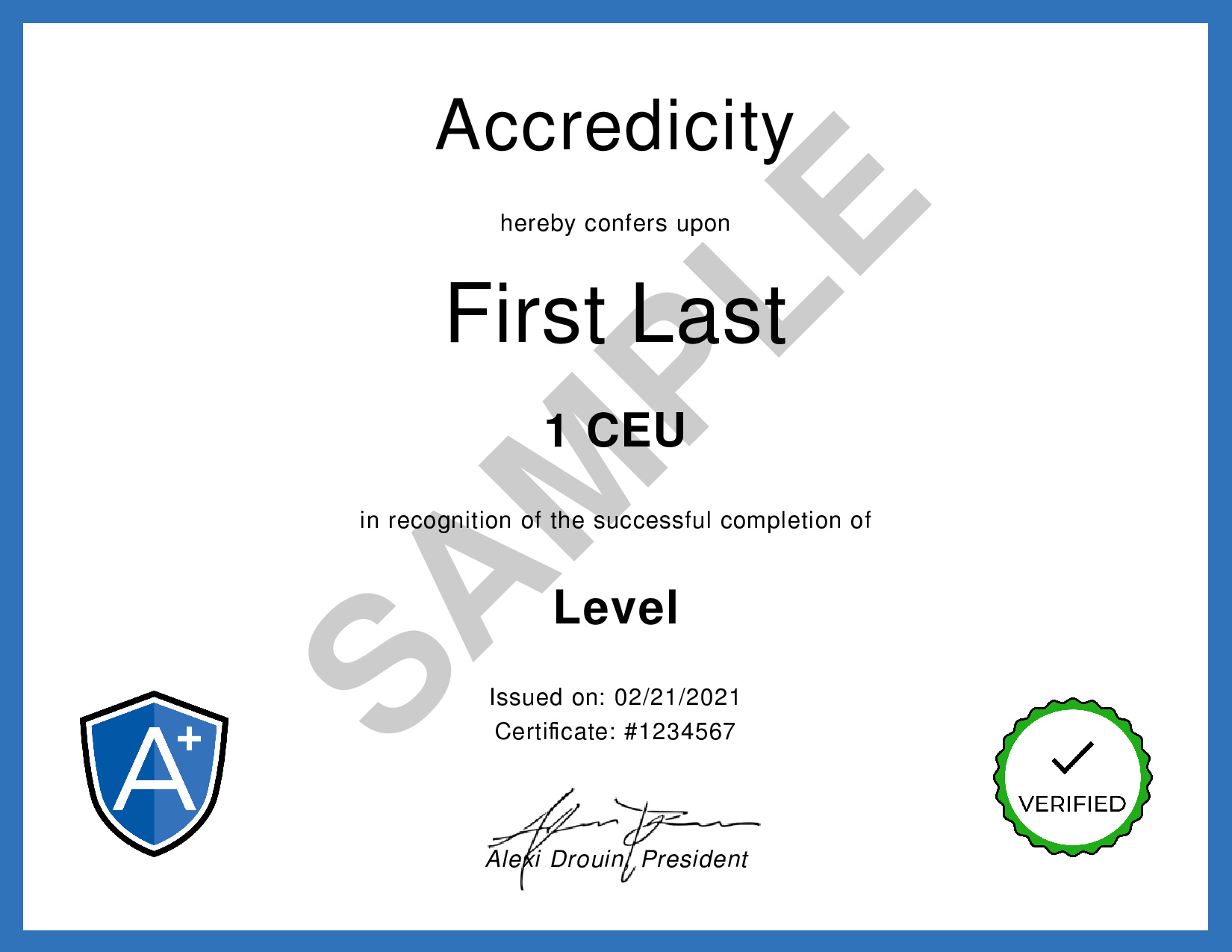Does Virtual Presence Still Matter At Work? | HBR
Reference: Harvard Business Review. (2021, April 06). Does Virtual Presence Still Matter at Work? [Video]. YouTube.
We Make Your Education Count

Get the Credit You Deserve and Become the Most Attractive Job Candidate by Earning and Posting A+ Badges to Your Linkedin Profile.
Sign Up to Get Started at Accredicity
|
Discover the secrets to mastering virtual presence and make the most of your on-screen time with Christine Versus Work. Virtual Presence still matters, especially in the current climate of virtual working. Christine Liu, the host of Christine Versus Work, dives into whether virtual presence is important with professional presence coach Rachel Cossar. They discuss the importance of being camera-ready, physicality and gestures, natural light, and the use of virtual backgrounds. They also provide tips on how to optimize the virtual presence experience, such as the distance from the camera, the use of a ring light, and how to address being called out for having your camera off. Christine and Rachel also touch on how this new way of working has changed over the past year. Learning Outline1. Show physicality in video meetings by being about three feet away from the camera so people can see most of you and your gestures. Instructional ContentDoes Virtual Presence Still Matter at Work? With the world moving to a more remote workspace, it is important to understand the value of virtual presence. Although we may not be in the same physical space, our virtual presence can still convey a sense of professionalism, confidence, and engagement. In this video, Christine Liu interviews Rachel Cossar, a professional presence coach. Rachel explains the importance of physicality, humanity, and technology when it comes to virtual presence. Christine also learns some tips and tricks from Rachel on how to make the most of her virtual presence. We should strive to be within three feet of the camera so that people can see our gestures and facial expressions. At the same time, it is important to turn off the selfie view so that we are fully engaged in the meeting. Rachel also recommends doing physical anchoring exercises before the meeting to refresh your body and mind. When it comes to technology, there are a few things to consider. We should make sure that we are in front of a plain, flat, solid background and to avoid using virtual backgrounds. Rachel also suggests that if you need to be off camera during a meeting, you should let your colleagues know in the chat. Virtual presence still matters even a year into the pandemic. It is essential to be aware of how we come across on video calls as it can affect our audience’s impression of us. By following Rachel’s tips and tricks, we can ensure that we make the most of our on-screen time. Communication
|

Virtual presence still matters a lot at work, even after a year of video calls. It's like we're all video stars in our meetings now! To look more professional and confident, you should be about three feet away from the camera and make sure you have good lighting. You should also be engaged and pay attention to others in the meeting, not just looking at yourself in the camera. Rachel Cossar, a professional presence coach, suggests doing some physical anchoring exercises before each call to refresh your body and mind. It's like getting ready for a performance on a stage, but in a virtual world! Video Quotes"We don't have to be stoic non-moving robots. It just-- it's not interesting." - Rachel Cossar "When everything aligns to send an impression of confidence and professionalism, it also sets you up to be more energized, more focused, more articulate." - Rachel Cossar "If you want to be fully engaged in a meeting, be on camera but turn your selfie view off. I love this tip. This way you're not kind of distracted the whole time, sort of glancing at yourself. And instead, you're fully focused on everyone else in the call." - Christine Liu Related Quotes"Especially in the remote world, having the right culture, the right values, the right community, those are the things that are going to be the most important." -Michael Pryor, CEO of Trello "Despite the technological advances, virtual presence is still a very important part of our day-to-day work life." -Amitabh Saxena, CEO of Skcript "In the end, it's all about creating the right culture, the right values and how do you ensure that in a distributed environment." -Vandana Viswanathan, VP of Engineering at XebiaLabs Competencies1. Communication Etiquette Learning Outcomes1. Explain the importance of virtual presence in the workplace, as well as physical and technological tips to optimize its effectiveness (Knowledge). 2. Analyze the differences between a year ago and now regarding virtual presence (Comprehension). 3. Demonstrate the use of physical anchoring exercises to refresh the body and mind prior to a virtual call (Application). 4. Evaluate the importance of physicality, proximity to the camera, and use of virtual backgrounds (Analysis). 5. Create a set of guidelines to ensure a successful virtual call (Synthesis). 6. Assess the necessity of being on camera during a virtual call and strategies to address potential issues (Evaluation). Sample Answers1. From this video, I learned that virtual presence is still important, even a year into the pandemic, for giving an impression of confidence and professionalism. To make the most of my on-screen time, I should aim to be three feet away from the camera, focus on the other participants, and do some physical anchoring exercises before the call. 2. I also learned that I should have a plain and flat background and adjust the camera so that my face is seen properly. Additionally, if I need to be off camera I should make sure to let the other participants know and comment in the chat. 3. Lastly, I learned that natural light is preferred to a ring light, but if that is not available, I should make sure to adjust the lighting and position of the camera in order to give the best possible impression. Christine LiuChristine Liu is a Senior Innovation Strategist at Deloitte Consulting and an Adjunct Professor of Entrepreneurship at the University of Southern California. She has a Ph.D. in Technology Innovation Management from George Washington University and a Bachelor's Degree in Business Administration from the University of Southern California. Her expertise in virtual presence is based on her work in digital transformation, emerging technology, and innovation. She has also been a keynote speaker and panelist at various conferences and has been featured in publications such as Forbes, Wall Street Journal, and CNBC. Christine Liu is associated with Deloitte Consulting Deloitte Consulting. Learning DesignThe competencies of communication etiquette, digital literacy, and collaboration and coordination are essential for any course focused on communication. They provide the foundation for successful communication in any setting, from the workplace to social media. Communication etiquette is important because it ensures that people communicate with respect and consideration for each other. It is the foundation for building relationships and trust. This is especially important in a digital age where communication can be misconstrued or interpreted differently. By using a scaffolded approach, students will have the opportunity to practice and build their communication competencies in a safe and supportive environment. This will help ensure that they have the skills to communicate effectively in any setting. AssessmentQ: What is Rachel Cossar's recommendation for video calls when it comes to virtual backgrounds? Answer: B. Use a plain flat solid background Questions1. What tips does Rachel Cossar offer to help someone be better prepared for virtual meetings? KeywordsVirtual Presence, Virtual Backgrounds, Camera-Ready, Video Meetings, Professional Presence Coaching, Confidence Professionalism, Video Stars, Technology Awareness, Physicality Exercises, Selfie View Off, Natural Light, Ring Light, Engaged Meeting, Video Calls Facts1. Virtual presence is still important a year into remote working, as it helps to create an impression of confidence and professionalism. Trends1. Hold virtual presence workshops to help employees become more comfortable and familiar with the technology and their body language in virtual meetings. SourceThis learning instructional guidance was formulated using the GPT-3 language model created by OpenAI. ShareAre you feeling the pressure to look your best on video calls? Take a cue from @RachelCossar, a pro presence coach: show physicality, stay focused, & do anchoring exercises for a refreshed body & mind. #VirtualPresence #VideoCalls #ProfessionalPresence 💻😊 @Accredicity |








 15 Creds - Communication
15 Creds - Communication



